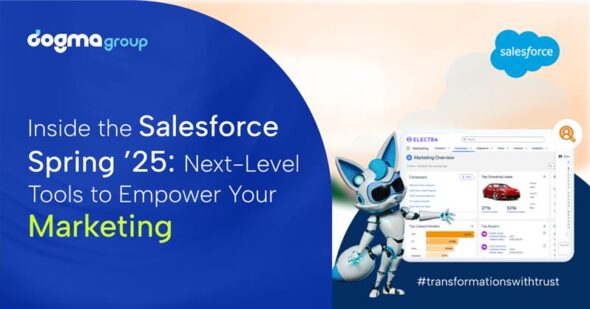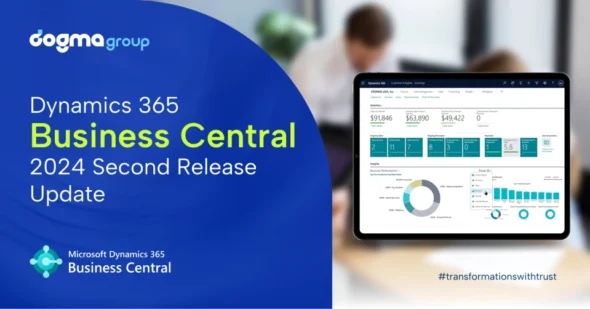Today’s digital world has transformed how businesses operate. Technologies have now long provided ways to take tasks previously done manually to an automated digital sphere. As companies grow, so do their needs for more streamlined, integrated and collaborative digital tools.
It has become imperative for businesses to incorporate such systems into their processes, at times, less to gain a competitive advantage and rather to simply keep pace with the market.
For most businesses, their journey to digital transformation starts with a Customer Relationship Management (CRM) software. The system introduces a level of automation to collecting customer data so that teams across the enterprise can take accelerated decisions with actionable insights.
In addition, the systems integration with other business tools and its AI capabilities helps to develop, improve and maintain customer relationships. Simply put, CRM helps businesses focus on the customer and improves productivity to increase sales.
The global CRM market is growing by leaps and bounds annually. According to Gartner, in 2015, it was worth USD 27.5 billion. In 2021, it rose to USD 69 billion. By 2029, CRM market worldwide is projected to climb to almost USD 146 billion.
Businesses are clearly embracing the technology. With improvements in usability, functionality and user-experience of CRM solutions, businesses are reaping the benefits.
In the most positive of projections, for every dollar spent on a CRM solution, businesses earn back USD 8.71 (Nucleus Research, 2014). Additionally, a small number of businesses that opted to integrate CRM further into their other applications have seen a substantial rise in productivity and an overall growth of 20-30 percent (Nucleus Research, 2019).
Technological solutions such as CRM are visibly beneficial. So why aren’t all businesses implementing them? Firstly, such solutions can mean a large final investment in the get-go; benefits take time to become apparent.
Secondly, like any tool, the benefits of CRM depend on how the tools are used. More than the technology, the results depend on the implementation of CRM across a company’s business process.
Like for any other investment decision, the logical move would be to calculate CRM returns or its ROI. There are many online ROI predictors, such as Forrester’s Total Economic Impact (TEI), that help crunch the numbers and give you an estimated figure.
However, such results are only as reliable as the data you provide. On top of that, there are likely numerous hidden costs to your current ways of operations and hidden benefits that a CRM solution might bring that are hard to quantify.
For instance, how much does running your business off an Excel spreadsheet cost? How much monetary value will your business gain from quicker customer response time or faster decision-making?
However, ROI on CRM is one of many ways to measure its performance benefits. The primary purpose of a CRM solution is to help you sell. The better your interactions with your leads, the higher the chances to convert them into customers as well as retain existing ones.
Quite simply, a business needs to sell more or sell at lower costs or hopefully do both. Therefore, higher the incremental revenue you generate, the more you will earn from your investment.
What returns can you expect from CRM within the first five years?
Boost in Sales Volume:
- Sales volume: Growth in the number of sales closed and their value increased over time.
- Time per sale: Your sales team taking less time to convert opportunities to sales.
- Number of deals closed: Increase in the number of leads converting to customers and eventually closing.
- Lead source: Better leads tracking and maximising your sales channel performances.
- Net revenue: Identify and sell to new customers, perhaps through tapping into newer parts of the market.
Reduced costs of sale:
Sales administrative time: Your sales team spending more time selling and less time working on administration.
Upsell rate: Existing customers purchase more add-ons and supplementary products or services
Customer acquisition cost: Acquire new customers for less cost. Also, better target high-value customers to prioritise the time of your sales team.
Intangible benefits:
- Accurate tracking and recording of customer communication and acquisition
- Creation of a centralised database
- Simplified collaboration between sales and marketing departments, such as allowed by Microsoft Dynamics 365 Customer Service
- Effective automated routing of work across employees, such as through Salesforce’s Service Cloud
- Insightful customer behaviour analysis made easy through dashboards
- Standardised bespoke report
Therefore, the most significant way of measuring the performance of a CRM solution is through tracking metrics that highlight sales growth. Metrics vary depending on your business and its strategic goals and objectives, but a few of the most applicable ones to measure CRM success are:
- Net promoter score (NPS): How likely are your customers to recommend your business to others? An effective CRM solution foster greater customer loyalty that brings in more sales. An NPS survey objectively measures such customer behaviour, and businesses leading Net Promote scores grow twice as fast as their competitors.
- Time to recoup customer acquisition costs: Businesses create strategies to allocate budgets to acquire new customers. By calculating the months, it takes to earn back the customer acquisition costs (CAC), you can determine how efficiently you are spending your money.
- Marketing campaign effectiveness: Various metrics are used to track the effectiveness of marketing campaigns. Cost per lead determines the leads a campaign generates; incremental sales evaluate the performance of marketing efforts to bring in sales; campaign conversion rate determines the efforts that generated best customers; while customer lifetime value analyses the total purchases made by customer during their relationship with your business.
- Customer retention rates: Acquiring new customers can be a costly endeavour. Most often than not, keeping existing customers is easier and more profitable for any business. Loyal customers tend to be persuaded quicker and buy more. CRM helps significantly in customer engagement and retention.
- Email distribution growth: The more potential customers you reach, the higher your chances of making sales. A growing email distribution through CRM ensures that you have more customers on top of your sales funnel who are likely to engage with your business and make an eventual purchase.
What are the minimum returns from CRM?
Focusing on your customers is a guaranteed way of boosting sales and profit. A CRM solution is a powerful tool that enables you to assess, manage and automate your business process to remain customer focused.
Newer capabilities of the software enable sales and marketing teams to collaborate more effectively in converting leads as well as create more productive marketing and selling strategies. At the bare minimum, your business will become more efficient and productive with CRM.






